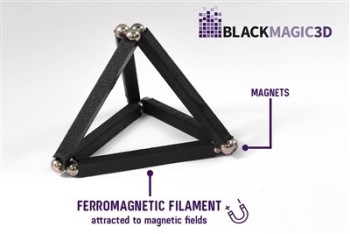
Graphene 3D Labs has announced a newly available 3D-printable PLA filament that’s magnetically conductive.
It’s the latest offering in the company’s growing line of functional filaments. Graphene 3D Labs calls its new concoction Black Magic 3D.
Graphene 3D Labs broke into the 3D printing materials scene a few years back by offering graphene-enhanced 3D printing materials. Since that time, the company has been perfecting its conductive, graphene-impregnated filament and even introduced a new 3D-printed battery technology.
With its new release, Graphene 3D Labs is furthering its reach into the nascent field of 3D-printed electronics. According to the company, Black Magic 3D is best suited for the production of sensors, mechanical actuators and even motors.
“As this filament is ideally suited to switches, sensors and actuators, we also expect that this new functionality will challenge more traditional manufacturers to examine incorporating more 3D printing technology into their manufacturing processes,” said Elena Polyakova, co-CEO of Graphene 3D Labs.
One of the major benefits of Black Magic 3D is the company’s claim that the material won’t rust despite its composition. The Black Magic 3D filament is strongly attracted to magnets, especially when it’s near neodymium iron boron or samarium cobalt magnets.
Read more at ENGINEERING.com

